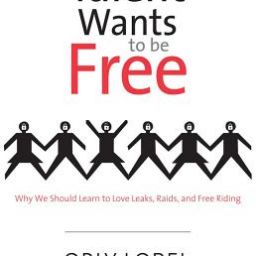[youtube=http://www.youtube.com/watch?v=pxn567bHny8]
I come neither to bury Barbie nor to praise her, but to acknowledge her larger cultural role, after turning fifty this year.
And she has played an important role in several reported IP disputes (and many more unpublicized ones) — and likely more in the future. I think an entire intellectual property class could be built around Barbie — considering that are publicized claims/suits on copyright, trademark, and trade secrets.
So what makes Barbie matter so much?
For most girls in the U.S. and in many other countries, playing with Barbies is part of their childhood–dressing them over and over again, putting their ridiculous shoes on after falling off, taking them out for a drive in her RV, arranging the furniture in her dreamhome. Oh, and arranging the most scandalous weddings! In many families, Barbies are passed down from sister to sister, mother to daughter (assuming that they survive having their heads popped off, fighting with G.I. Joes, and being parachuted out windows).
The Barbie experience is part of the cultural memory of girls and women, despite the brand being owned by Mattel.
According to Naomi Klein in No Logo, the lawsuit against Aqua’s Barbie Girl:
highlighted the uncomfortable tension between the expansive logic of branding — the corporate desire for full cultural integration — and the petty logic of these legal crusades. Who if not Barbie is as much cultural symbol as product? Barbie, after all, is the archetypal space invader, a cultural imperialist in pink. She is the one who paints entire towns fuchsia to celebrate “Barbie Month.” She is the Zen mistress who for the past four decades has insisted on being everything to young girls — doctor, bimbo, teenager, career girl, Unicef ambassador….

According to the Barbie website,
Creativity and inspiration is in Barbie® doll’s DNA. Artists and designers from around the world have been inspired by her, whether using Barbie as a muse for fashion design or using the famed image of Barbie for a painting
While supporting some artistic reinterpretations of Barbie, Mattel, the owner of Barbie, has been very aggressive in defending their intellectual property rights.

Aqua’s Barbie Girl (video above) is only the most well-known of the Barbie cases, but some other famous cases of aggressive IP protection include: Distorted Barbie and Forsythe’s Food Chain Barbie.
According to Freeculture.org:
The Forsythe case highlights the increasing challenges faced by those who wish to comment on popular icons, symbols, or cornerstones of culture, most of which are copyrighted by large corporations. “If you want to talk about the problems with society, all of the widely recognized figures are copyrighted,” says Nelson Pavlosky of Freeculture.org. “In the past, cultural icons belonged to everyone…[now] if you want to use a relevant character to critique society, you’ll get burned by companies who can silence you, not by winning in court, but by outspending you and forcing you to cave in or lose all your money.”
And Barbie has lived up to the last sentence — challenging some very obvious cultural critiques with small pockets. Adiós, Barbie is now a website (and blog) about positive body image for girls and women, though it started as a book, called Body Outlaws: Rewriting the Rules of Beauty & Body Image for its third edition:
The book book launched in 1998 under the name Adios, Barbie. It was all good for a year, until Mattel delivered my publisher a lawsuit, claiming a trademark violation. Shunned from the Dreamhouse, we agreed to change the book’s name and cover.
[youtube=http://www.youtube.com/watch?v=0h_5URNi9lE]
But what about the idea of a Barbie mashup? New York Law Revue’s Bar/Bri Girl (video above) takes the idealized clueless version of Barbie — as seen through the lens of Aqua — and pairs her with Bar/Bri, the law bar prep service. While both Bar/Bri and Aqua’s song are the focus, the cultural influence of Barbie is evident.

One final note, while trying to find pictures to illustrate some of the points made in this post (“fair use”!), I decided to go to the source — Barbie — rather than just doing an Google image search, or from news articles, or from sellers. When I found pictures and tried to copy, this was the pop-up:
This image is copyrighted, and it is owned by Mattel. You may not reproduce, distribute, publish, transmit, modify, adapt, translate, display, sell, license, publicly perform, prepare derivative works based upon, or otherwise use or exploit this image.

Wow! It seems like Barbie doesn’t just think math is hard — but still really doesn’t like fair use!



